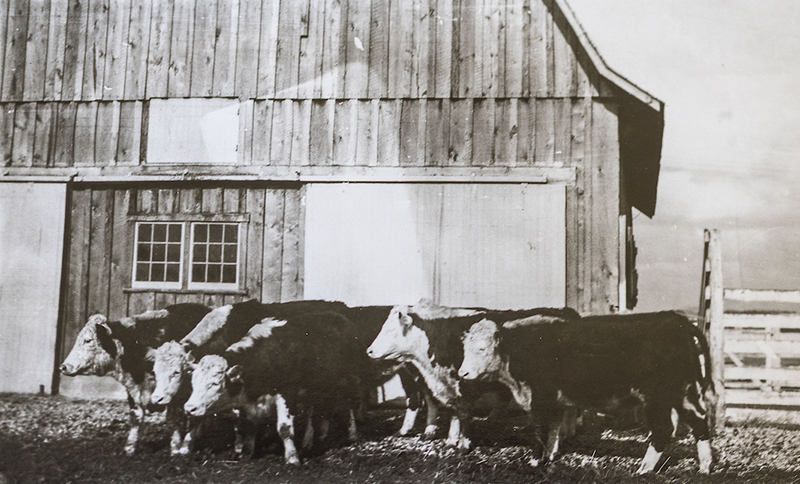Beef Cattle
Beef cattle research at UKREC has spanned many areas of production over the decades, always with the core mission of advancing the beef industry and providing solutions for Kentucky’s farm families. This mission will continue to guide future research at UKREC as we address emerging issues and future challenges.
A major focus for future research is sustainability, particularly improving efficiency—producing more pounds of beef with fewer inputs and resources. Central to this effort will be evaluating management and nutrition practices that enhance feed efficiency, reduce feed costs, and improve animal performance. Reproduction research will also continue to refine strategies to improve reproductive efficiency, ensuring long-term productivity. As the challenges within the industry evolve, so too will the tools and approaches available to address them.
In recent years, significant strides have been made in precision livestock farming (PLF) technologies, such as smart ear tags (think smartwatches for cattle) and virtual fencing. These tools can improve production efficiency and enable producers to implement precise management practices without increasing labor demands. Understanding how producers can effectively use these technologies in practical, on-farm settings is essential to their adoption and will remain a key area of research at UKREC.
While the future of beef cattle research at UKREC is filled with exciting opportunities, we remain committed to our core mission: serving Kentucky’s beef industry through problem-solving and real-world solutions.
Current Projects
Published on Apr. 14, 2025
Principle Investigator: Phillip Bridges National Research Service/National Institute of Food and Agriculture
Read ItemUKREC celebrating 100 years of beef research
From the very beginning, the promise of bigger, healthier herds fueled a pioneering spirit that would go on to transform the region’s farming landscape.
"It is my belief that our brightest ray of hope for any marked increase in the agricultural wealth of Kentucky will be found in further development of our livestock industry, following the development of better pastures, and that the average farmer will of necessity be led to produce better pastures." - Samuel Lowry, Superintendent, est. 1930s

Beef Center of Excellence
We strive to provide important, timely and relevant information to Beef producers in a collaborative one-stop environment.
ResourcesBeef Cattle Articles and Publications from UKREC Staff
- NEW - ASC-271: The Impact of Heat Stress and Fescue Toxicosis on Beef Cattle Reproduction
- ASC-270: Overview of the Mineral Nutrition of Yaks
- ASC-267: Controlling the Calving Season
- ASC-266: Reproduction in the Bull
- ASC-265: Estrus Synchronization Protocols for Beef Females
- ASC-264: Artificial Insemination in Beef Cattle
- ASC-263: Converting from Year-round to Controlled Calving
- ASC-260: Controlling Reproduction in Female Yaks
- ASC-259: Reproduction in Female Yaks
- ASC-258: Minerals Matter for Beef Cattle
- ASC-249: Reading the Fine Print: Understanding Mineral Tags
- ASC-248: Vitamin Supplementation for Beef Cattle
- ASC-245: Feeding Soybeans to Beef Cattle
- AGR-262: Utilizing Drought-stressed Soybeans for Forage
- ID-108: The Kentucky Beef Book, 2021
- ID-262 Considerations for Utilizing Frozen Small Grains for Forage
- ID-264 Feeding Corn Silage to Beef Cattle
- ID-263 Alternative Protein Sources for Cattle
- ASC-244 Feeding Distillery Stillage to Beef Cattle
